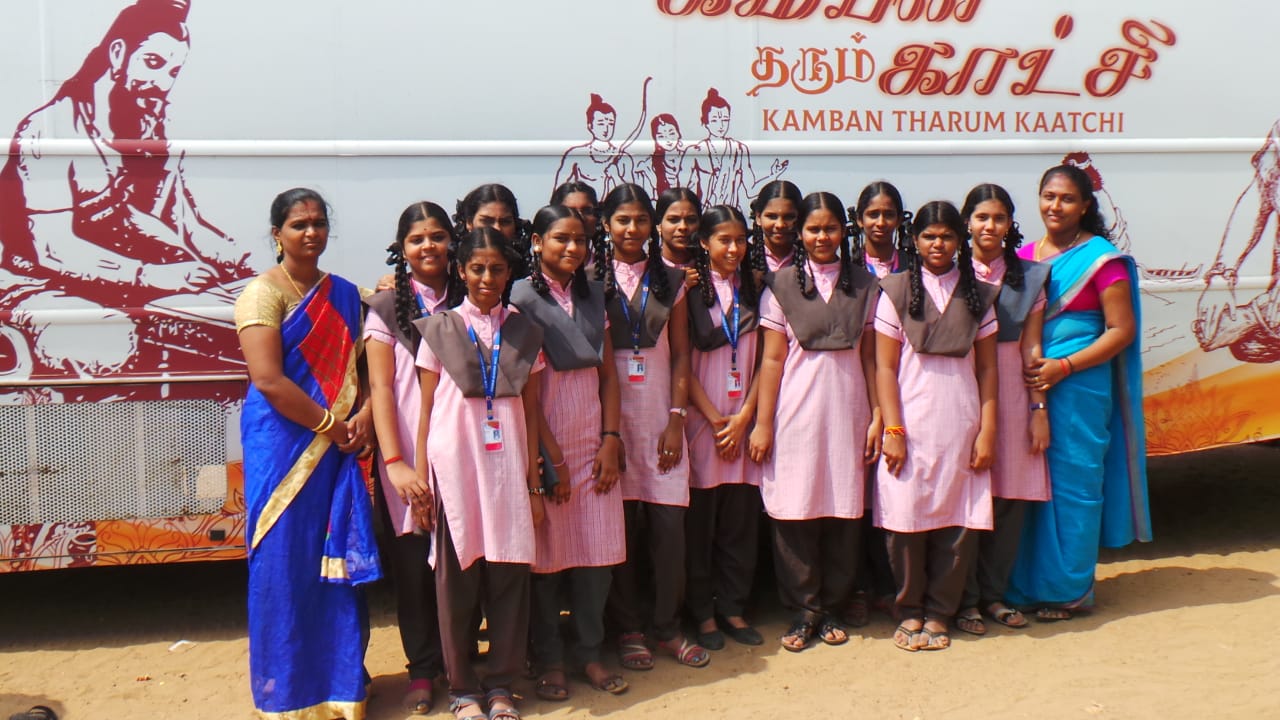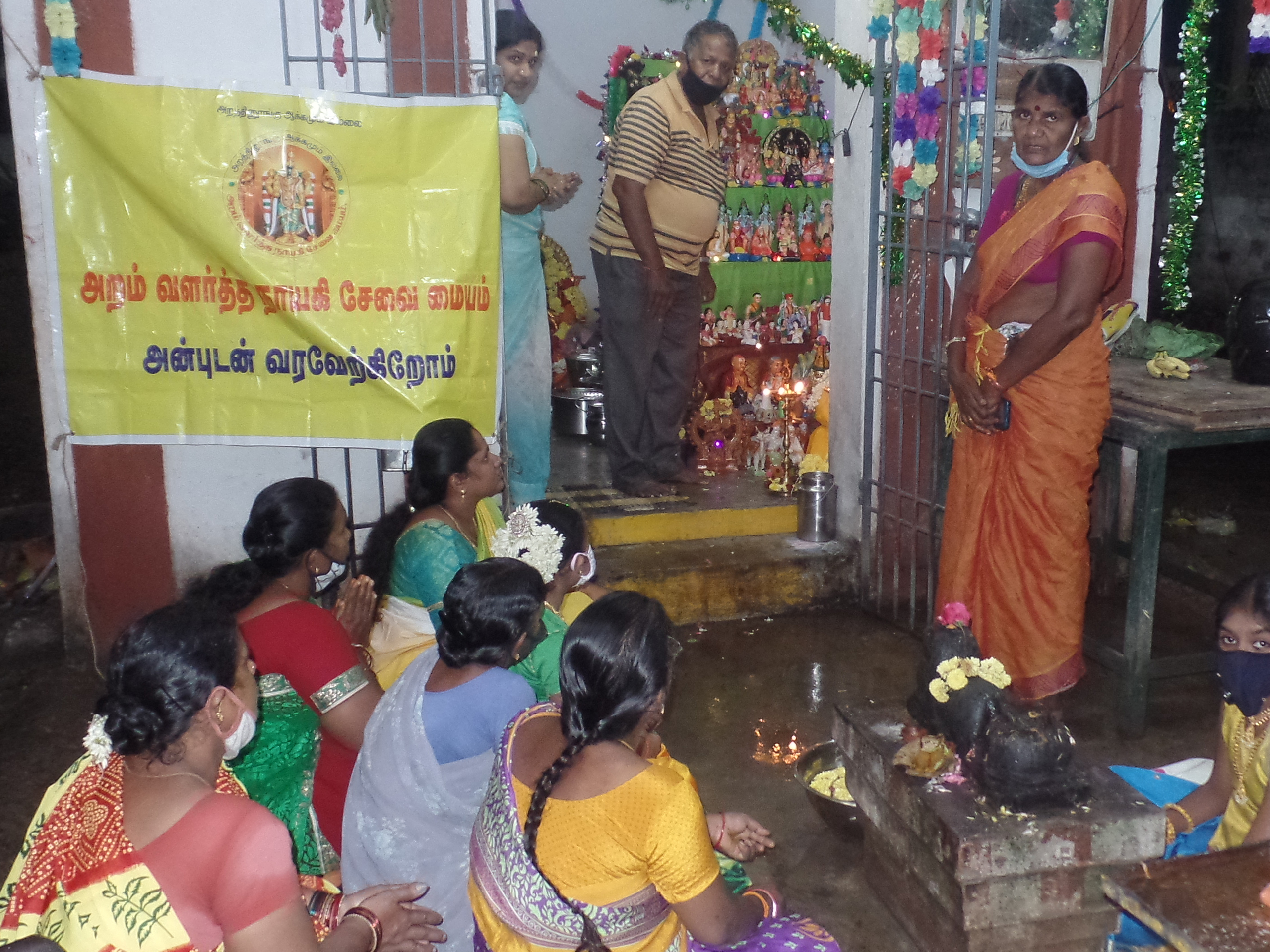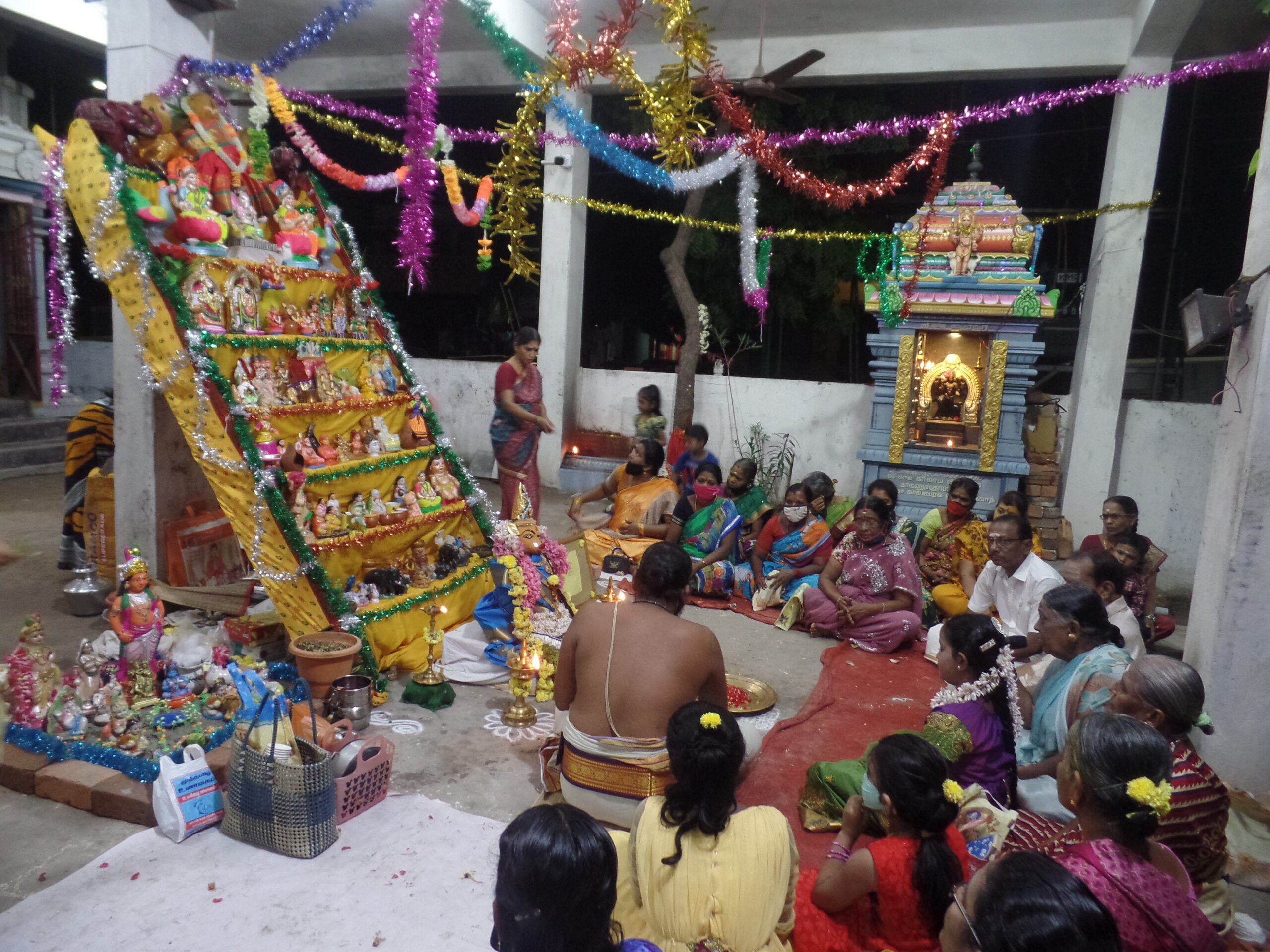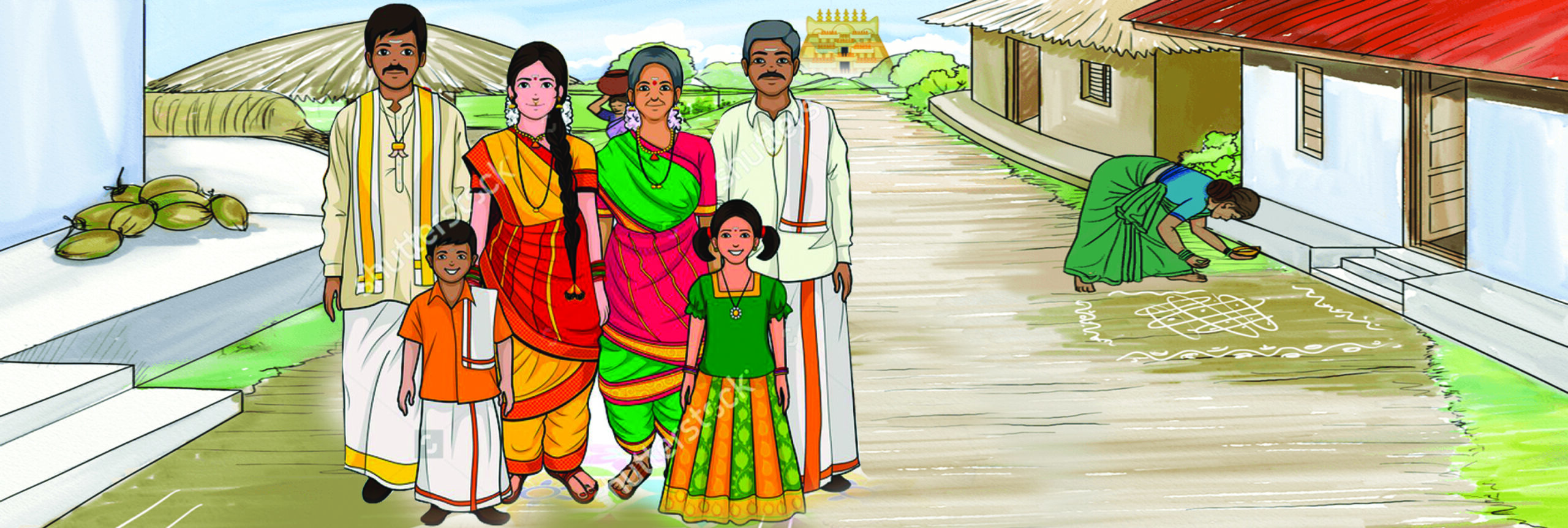
HINDU KUDUMBAM
Family is the smallest unit of hindu society. Our customs, rituals and festivals kept this institution live since thousands of years. There is a constant effort to weaken the faith on this institution due to the western intrusion.
Aram vallartha nayaki Sevai Maiyam working to re-establishment of family system by propagating value’s and make people to practise our rituals, customs and festivals.
- TAMIL NEW YEAR
- AKSHAYA TRITIYA
- KRISHNA JEYANTHI
- NAVARATHIRI
- KUDUMBAMEY KOVIL
- SHIVARATHIRI
- SPECIAL PROGRAMS
TAMIL NEW YEAR
We can see how or ancestors had not only understood the functioning of the cosmos but had also worked out models for translating it into mathematical calculations. These models are available to us today in the form of Panchanga, the Indian calendric system. The five parameters, namely the Nakshatra, Thithi, Vaara, Karana and Yoga, which define the position of the earth with respect to the 7 visible bodies of the solar system, form the vital parts, anga of the Indian calendar. The Indian calendar is thus called a Panchanga indicating it has 5 components.
The calendars in India follow both the Sun and moon. They are essentially Luni Solar and use the Rasi as the months. Some parts of India use the Sun and Stars of the Rasi as the marker, i.e. Sauramanam, while some other parts use the moon and the Rasi as the marker and the months start based on the phase of the moon and the Rasi being transited by the Sun ie Chandramanam. This calendar also accounts for the cyclical repetition of planetaryn positions every 60 years; there are 60 names, one for each year, that repeat after 60 years. Records suggest that the solar calendar has been in place since at least 3000 years.
In Tamil Nadu Sauramanam is being followed and the New Year is celebrated as Chitrai Puthandu. Aram Vallartha Nayaki Sevai Maiyam undertook activities to educate the people about the scientific aspects of Chitrai Puthandu (their own calendric system) and inspire them to follow the same.
What We Do?
Teams will be formed with the volunteers according to the population around the temple.
On Chitrai Puthandu, volunteer teams will visit each house around the temple and extend New Year wishes with a Greeting card and a Brouchure with the scientific aspects of our calendric system.
Our Reach so far
In 2021, we reached 3, 12,700 families in the Chennai city on Chitirai Puthandu with Sree Lakshmi Narashimhar Greeting card.
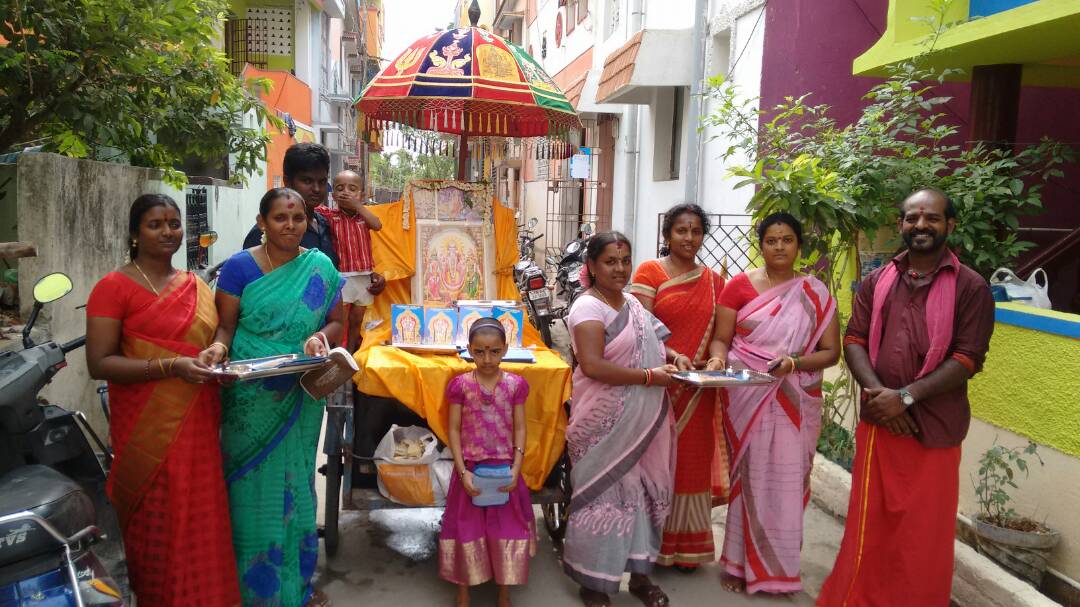
Akshaya Tritiya
Akshaya Tritiya is one of the most misunderstood festivals. Currently, Akshaya Tritiya has come to mean an auspicious occasion to buy jewellery. In contrast, Akshaya Tritiya is an auspicious day which gives boon without any limit on whatever is wished. The third day after the new moon day (amavasya) in the month of Chittirai is Akhayathrithiyai.
On this auspicious day,
- Bhagirathan brought Akasha Ganga to the Earth.
- Veda Vyasa started the narration of the Mahabaratham and Lord Ganesha wrote them as scripture.
- Surya bhagavan offered Akshayaparthram to Drowpathi
- Saint AdhiSankaracharya recited Kanankathara stothram
- Beginning of Satya Yuga
- Sun and moon are astrologically at their most exalted equal brightness on this day
Aram Vallartha Nayaki Sevai Maiyam makes effort to educate the people, about the real intention of this auspicious day and helping them to reap the actual benefit of the day.
What We Do?
Door to Door awareness program on the importance of Akshya Tritiya by distributing Brochures
On Akshaya Tritiya, We organise Sree Lalitha Parameswari Pooja at the auspicious Sarva Siddhi Muhurtham in each wards of Chennai
To make each people prosper with the blessings of Sree Lalitha Parameswari we conduct this pooja for free of cost.
Our Reach so far
In the year 2019, 66,470 people performed Sree Lalitha Parameswari Pooja at 167 Locations across Chennai.
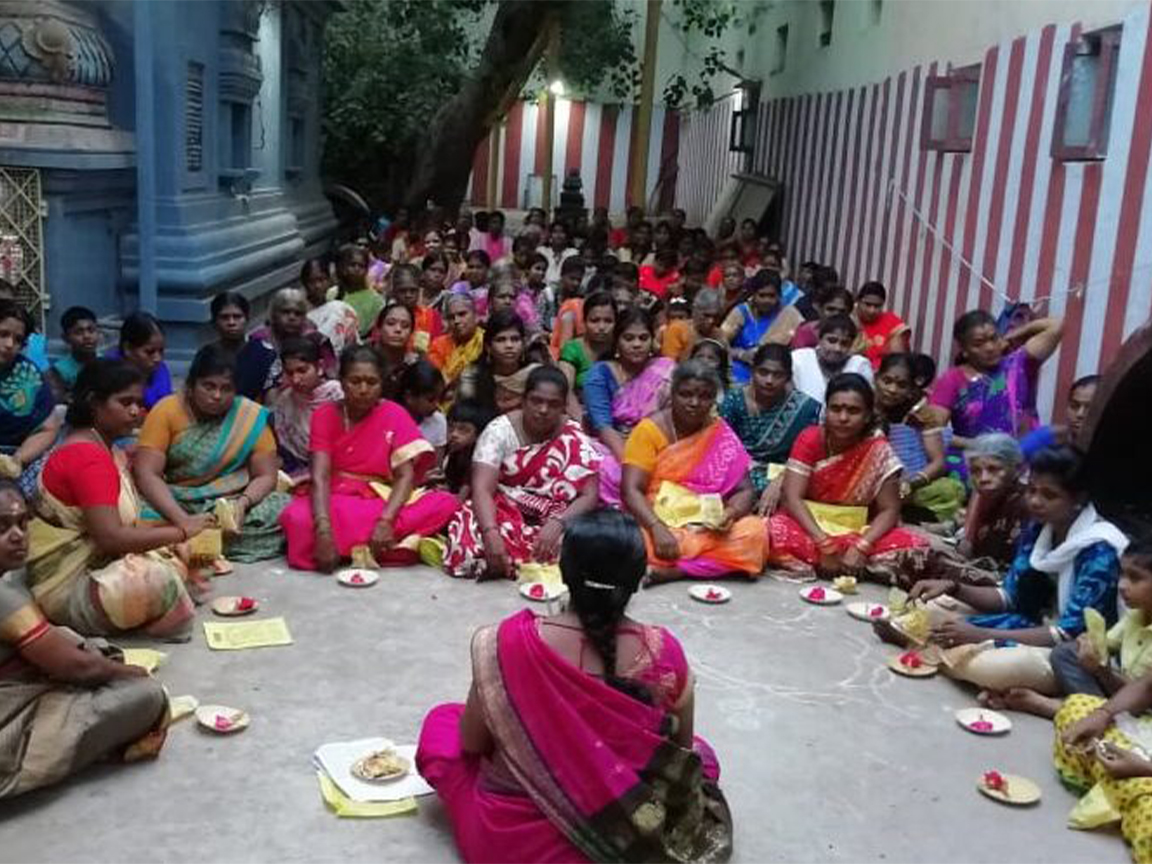
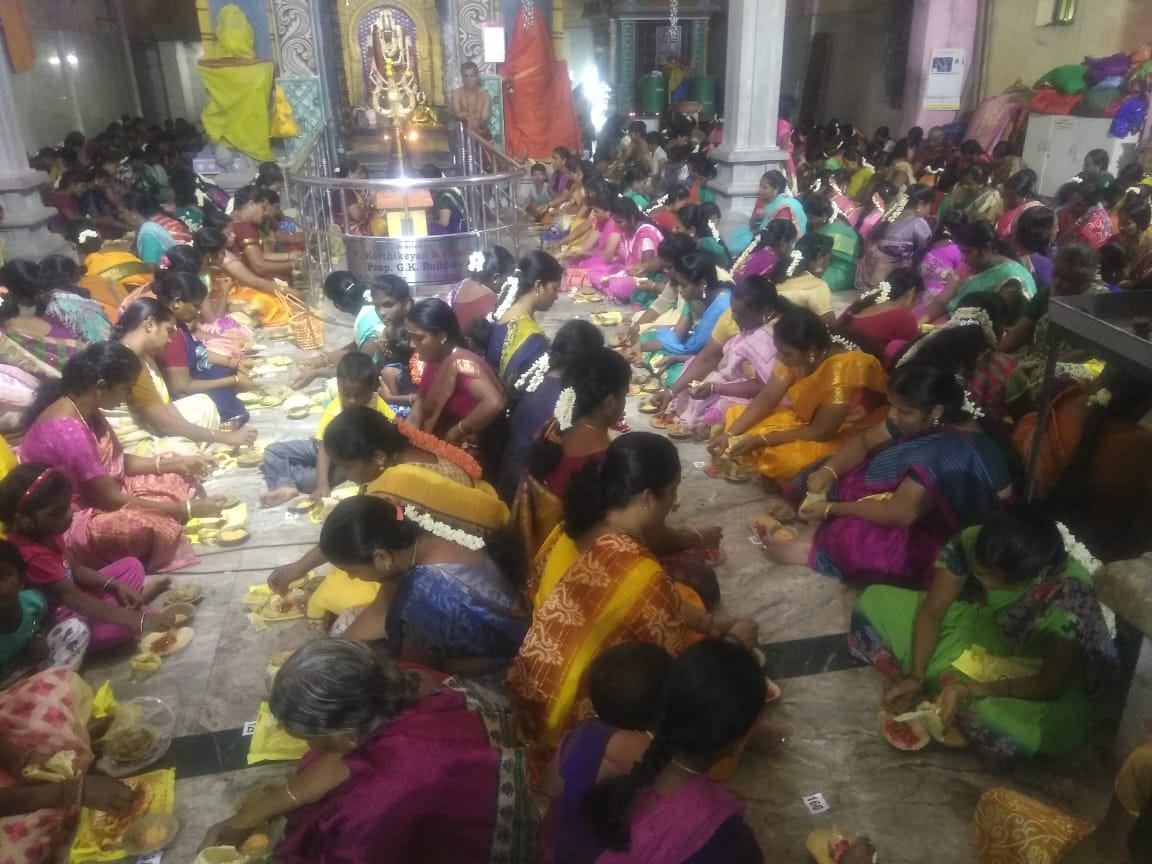
Krishna Jayanti
Krishna (Kannan in Tamil) is the most endearing form of the almighty (among the dashavatarams) to children. Though other avatars’ (like Sri Rama’s) childhood is also described well in our Itihasas, the sheer volume of stories about Krishna’s childhood and the natural identification of children with Krishna makes Krishnavatar ideal for educating children. Especially, children can learn from Krishna’s childhood that, even if one has a lot of struggles, one should always strive to uphold dharma.
Furthermore, the value-system practiced in each story associated with Krishna is self-evident and children will be encouraged to adopt the same in their day-to-day activities.
What We Do ?
- Our volunteers in each slum will Mobilise the children’s in the nearby temple.
- From Prathamai till Krishna Jeyanthi(Ashtami) children will chant Sri Krishna’s Moola Mantra for 108 times.
- On Krishna Jeyanthi the participant children’s will be offered Sri Krishna’s prasadam.
Our Reach so far
- In 2019, We reached 12,225 children’s of 604 slums across 15 zones of Chennai
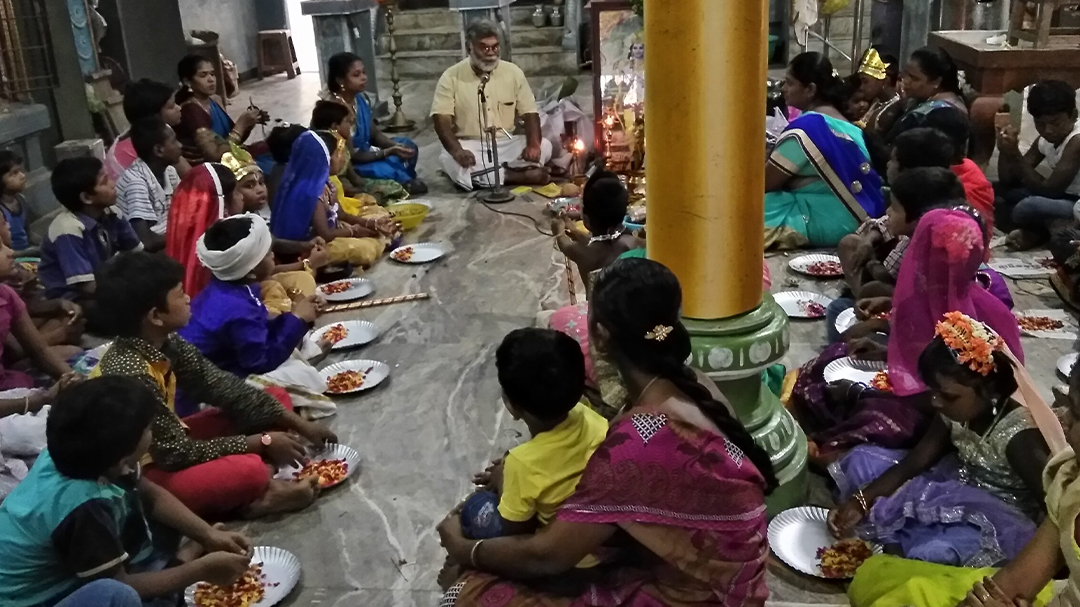
Kudumbamey Kovil
The basic building block of Hindu society is the joint or extended family, usually consisting of three of four generations living together. The women collectively cook and share domestic responsibilities, and the men provide the pooled income. Elders take important decisions and, based on their own experience in life, offer guidance to younger members.
The extended family traditionally provides shelter and support for the elderly, the disabled and the less well off. Children are expected to repay the debt owed to their parents by supporting them in their retirement and old age. An important aspect of Hindu family life is the inter-dependence between members. Marriage
itself is a broad social and religious obligation, rather than just a relationship between partners.
Among the four ashramas, the second stage of the married householder is central because it births and sustains the three other ashramas. When a man marries, he pays the three debts he owes to the ancestors, the gods, and his teacher (guru).
The Bharatheya Dharma defined our debts as being of five types.This debt is dispensed by means of the Pancha Maha Yajnas or the 5 great sacrifices each human is expected to perform each day.
What We Do?
ASM adopted whole month of Margazhi that is Vrischika. Hindu Kudumbam to teach people to perform the Pancha Maha Yajnas
Five activities for Five Yajnas will be prescribed for the families throughout Chennai
to practise in the whole month of Margazhi.
Our Reach so far
Totally 7500 families participated in this activity in the year 2020.
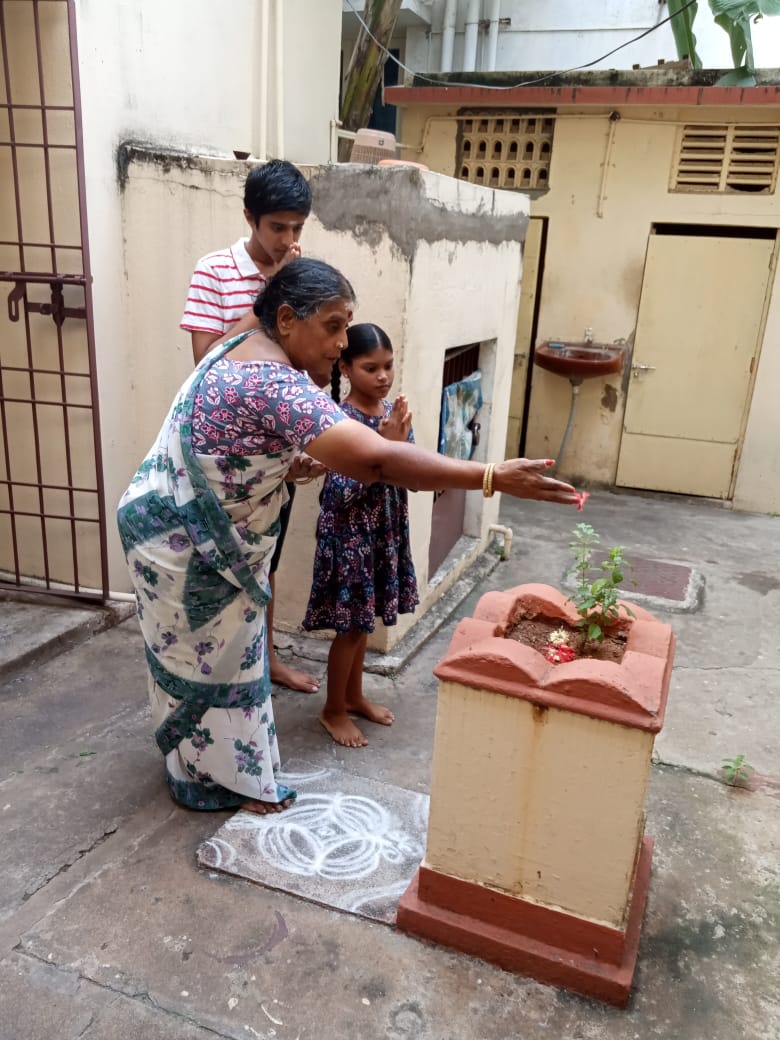

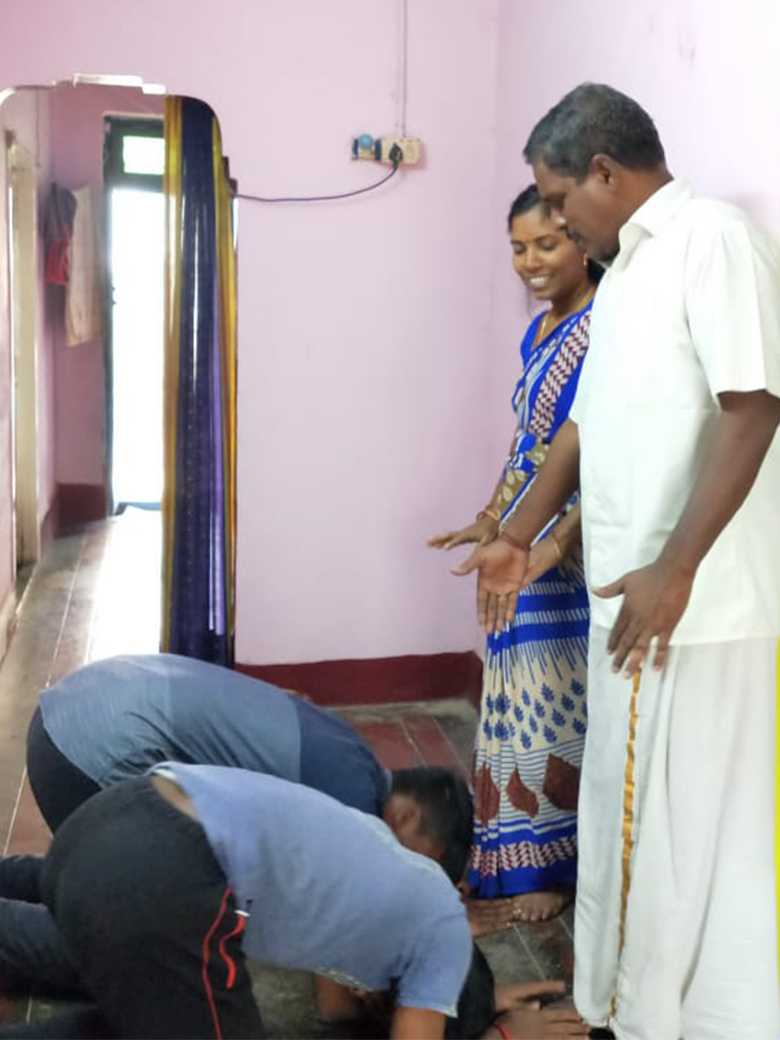
Mahashivarathri
We celebrate Mahashivarathri on the occasion of Lord Shiva's devotion to preserve humanity and all life forms from the poisonous impact of Vasuki’s curse by consuming the halaahala poison. Religious Scriptures shows that Hindu Gods protect the life of whole universe.
Our Shastras say that the excellence of penance and the power of its strength is in the mantra and the recitation of the same. Sage Patanjali says that one who says Japa with full heartedness will attain Athamsakshatkarram. The 25th sloka of the 10th chapter, called the Vibhuti Yoga states, amongst offerings or sacrifices, I am the Japa. This form of worship is unique to Hinduism.
Mantras are divine truths that were revealed to, and experienced by thousands of sages at the seat of meditation. The mantra “OM Namah Shivaya” is refered to as “Raja Manthiram” in shasthras. The word OM is the indication of Athmasaksathkaram, the word “nama” is the indication of maya. The word “shivaya” refers to Sivan himself. Understanding this we need to chant “Om NamahaSivaya”.
ASM has been promoting awareness of this Japam among the general public. Volunteers who perform the japam are educated about the importance of repeating the japam in the name of Shiva.
What We Do?
In this festival of Shivarathri, Shiva Nama Japam will be organised in the local temples by our volunteers.
Chanting of 1008 Shiva namajapam will be preformed from 1st day of full moon till the 14th day / Chaturdasi.
Our Reach so far?
1.Mahashivarathri was celebrated at 798 Temples in Chennai city in the year 2021.
2.Totally 8928 people participated in Mahashivarathri Celebration.
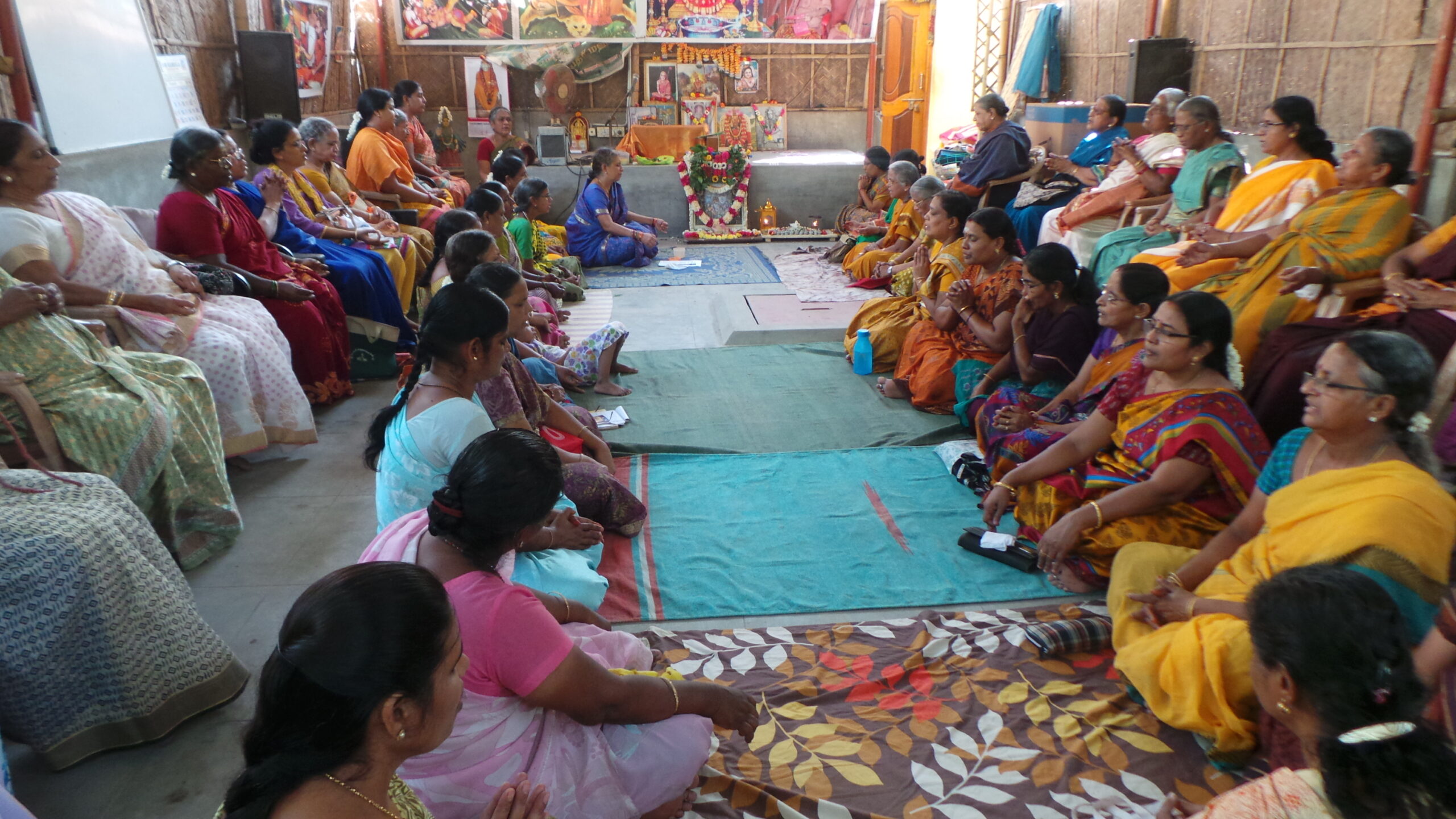
Kannan Nam Thozhan
The story of Kuchelar (Sudama) and Krishna is a beautiful example of ideal friendship. To step back a bit, as per the Mahabharata, Kuchelar was a co-student with Krishna for only 6 months as a child, while they met again after 96 years! Moreover, when Kuchelar was Krishna’s co-student, Krishna was a cowherd, but he was an emperor when they met in adulthood. Living in penury, Kuchelar was coaxed by his wife to meet Krishna for assistance. Kuchelar took avial (rice flakes) as his only gift for Krishna as he could not afford anything else.
Despite the marked change in fortunes, Krishna immediately recognized him and welcomed him heartily, going to the extent of pressing his feet (along with Rukmini Devi) to ease his travel pains. Kuchelar was so overwhelmed by the warm hospitality of Krishna, the Lord of the Universe and so entranced by his humility that he forgot all about the purpose of his visit. As a gift for his undivided attention, Kuchelar got much more than what he wanted when he returned home.
Likewise, this activity is intended to encourage people to focus only on the deity when visiting temples. If we devote our attention entirely towards the Lord, the Lord will automatically take care ofour needs.
Vyasa Poornima
Vyasa is one of the most well-known and venerated Rishis. He composed the Mahabharata, the largest epic ever written in the world. Additionally, most of the Puranas are also ascribed to him. Though popularly known as Vyasa his original name is Krishna (dark) Dwaipayana (born in a dwipa) island to Matsyagandhi a fisherwoman.
In effect, Rishi Vyasa’s life is testimony to the fact that the dharmik society was the epitome of a just society where anyone from any social group could raise to the highest position only through knowledge. Even though he was a son of fisherwomen, his birthday is celebrated as the Guru Poornima throughout the world (where people across different social groups pays their respect to their own guru) this shows the true nature of Sanathana Dharma.
What We Do?
Our volunteer conducts Vyasa Guru Pooja in each Fishermen village across Chennai on Guru Poornima day.
Our Reach so far
We reached 47 Fishermen villages covering 25485 people.
Valmiki Jeyanthi
The story of Rishi Valmiki is well known. The transformation of Valmiki from a hunter/robber, to a Rishi started after his attempt to rob Rishis. When the Rishis asked him the reason for robbing people, Ratnakar (Valmiki’s original name) replied that it was for his family. To this, the Rishis posed a question to Ratnakar, whether his family would partake of the negative karma accrued to him on account of robbing. Ratnakar asked this question to his wife, and was shocked to learn that she was not willing to share the negative karma. henceforth, Ratnakar took to tapasya and after a long period, evolved into Rishi Valmiki, who eventually composed the first epic/kavya, the Ramayana.
Rishi Valimiki’s life embodies the spirit of Hinduism. It exemplifies the fact that anyone, irrespective of their previous occupation (good or evil as it may be), can be moulded and made to turn towards the Almighty under proper dharmik guidance. The currently followed birth-based caste is an intermediary practice not sanctioned in any our scriptures. Birth-based varna is not sanctioned in any of our scriptures; even in the Bhagavat Gita (4 : 13), Sri Krishna states – chaatur varnyam maya srishtam guna karma vibhaga shaha, i.e., I created the four-fold varna based on guna (attributes) and karma (actions) (i.e., not birth).
This activity of ASM will attempt to re-emphasize and educate people about the true nature of Sanatan Dharma
Kamba Ratham
C. Rajagopalachari says " one could not understand Hindu Dharma unless one knew Ram, Sita, Bharat, Lakshman, Kumbhkarana, Hanuman. He appealed to the youth to read the Ramayana and said there is not a page, after reading which, one would not emerge with greater courage, stronger will and purer mind. He said the Ramayana is the record of the mind and the spirit of our forefathers, who cared for good ever so much more than for the pleasure.
Medieval Tamil poet Kambar lived around CE 1180-1250. Popularly known by other names including Kamban, he is said to have authored the Ramavataram, the Tamil version of the Ramayana. It was first recited by Kambar in the famous Sri Ranganathaswamy temple on Srirangam Island in Trichy. During his time, he also authored various other outstanding literary works such as Kangai Puranam, Thirukkai Vazakkam, Silaiezhupathu, Erezhupathu, Sadagopar Anthathi and Saraswathi Anthathi. As the fame of this talented bard grew, the reigning Chola king invited him to his royal court and honored him with the title of ‘Kavi Chakravarthi’ which translates to ‘Emperor of Poets’.
Being a scholar he was perhaps aware that great and powerful empires and civilizations in the world have crumbled, when people indulged in excesses and deviated from the moral pathway. Being proud of the richness and antiquity of his language, he could not tolerate such a tragedy happening to his own people.
Prompted by these considerations, Kampan thought it appropriate, it seems, to write a literary piece, which would improve the situation. This would give him ample scope to emphasize the excellence of virtuosity, chastity, brotherhood and the oneness of the Absolute Being.
To accomplish this objective Chinmaya mission has organized a KambaRatham to express and spread the words and ideas of “Kamba Ramayanam" in the name of “Kamba Ratham”. Aram Valartha Nayagi Sevai Maiyam took the Ratham to 200 wards of chennai, on a mission to reach the values of Ramayana to the bottom of the society.
Our Reach,
In this project we covered 1039 temples in Chennai
Totally 16575 people visited the Kamba Ratham
